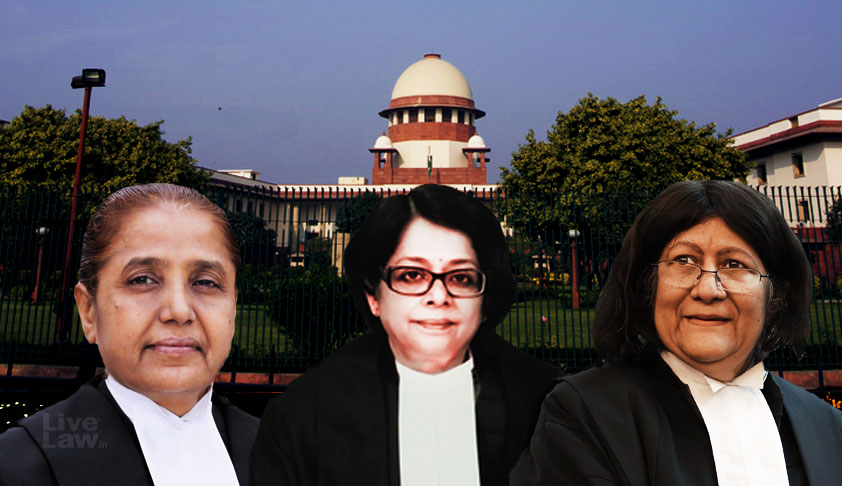- Home
- /
- Top Stories
- /
- In A First, Supreme Court Has Three...
In A First, Supreme Court Has Three Sitting Woman Judges Today
Apoorva Mandhani
7 Aug 2018 6:39 AM GMT
Today, Justice Banumathi is presiding over Court Number-12, Justice Indu Malhotra sits with Justice RF Nariman in Court Number-9 and Justice Indira Banerjee sits with Chief Justice Dipak Misra and Justice DY Chandrachud in Court Number-1.The swearing-in ceremony of Justice Indira Banerjee as a Supreme Court judge held today did more than just appoint her to the highest judicial institution...
The swearing-in ceremony of Justice Indira Banerjee as a Supreme Court judge held today did more than just appoint her to the highest judicial institution of the country— it also gave the Apex Court its eighth woman judge.
The event is noteworthy because this is the first time in the history of the Supreme Court that three woman judges will be sitting in the Supreme Court at the same time. The enormity of the situation dawns in with the realisation that the history being spoken of is 68 years long, with a total of 233 judges (including the newly appointed judges).
The legal profession, in general, has often been notorious for being an All Boys Club, with the first woman to formally enter the legal practice being Cornelia Sorabjee, the first female barrister in India. However, she was recognized as a barrister only in 1923, despite having cleared the pleaders exam of the Allahabad High Court in 1899, after the law barring women from practising was altered. It is no surprise then that the country got its first female Additional Solicitor General with Ms. Indira Jaising’s appointment only in 2009.
Much similar to the Bar, the Bench is also indicative of the gender disparity that exists in the institution. While a recent study had shown that the lower judiciary across India has a mere 27.6 per cent female judges, the state of affairs at the higher judiciary isn’t less dismal, considering that the Apex Court had to wait for almost four decades to get its first woman judge, Justice Fathima Beevi, who was elevated to the Apex Court in 1989.
Justice Beevi was followed by Justices Sujata V. Manohar, Ruma Pal, Gyan Sudha Misra, Ranjana Prakash Desai, R. Banumathi, Indu Malhotra, and now, Indira Banerjee. Most of these judges spent their tenure as the sole woman judge in the Supreme Court. The trend changed as recently as in 2011, when Justice Desai was elevated to the Bench, becoming the second sitting woman judge along with Justice Misra.
The issue is certainly not restricted to India, with developed countries such as the UK and Ireland, and some international bodies also grappling with the same trend. For instance, the UK Supreme Court got Brenda Hale as its first female President only last year. Further, while there have been qualms about reducing these judges to their genders, the concerns on representative justice and the necessity of more female voices to ably reform a patriarchal society essentially outweigh these qualms.
Nevertheless, the development at the Supreme Court is a welcome one, with hope brewing that the Apex Court will one day lead by example when the appointment of a woman judge would be a matter of course.


